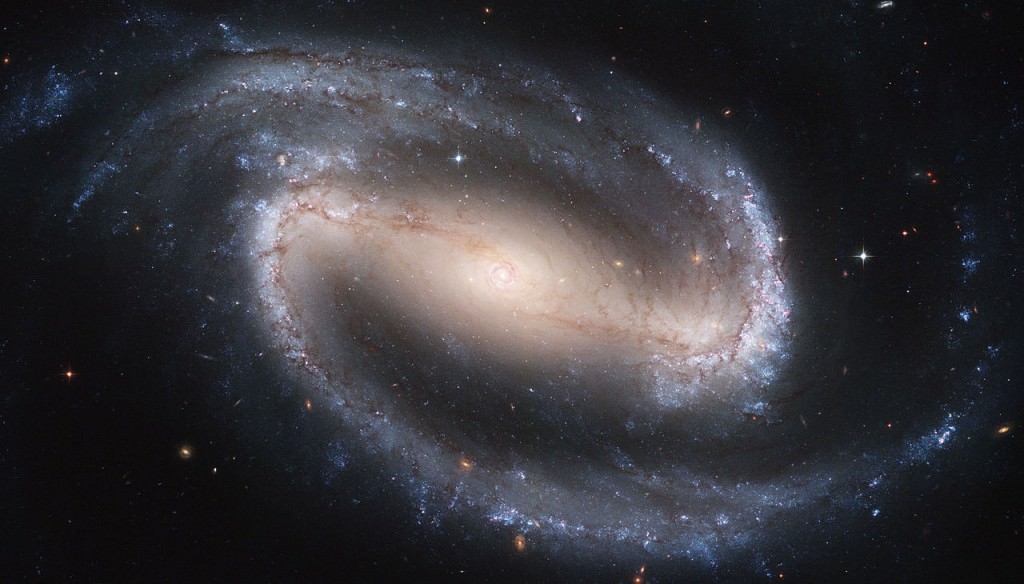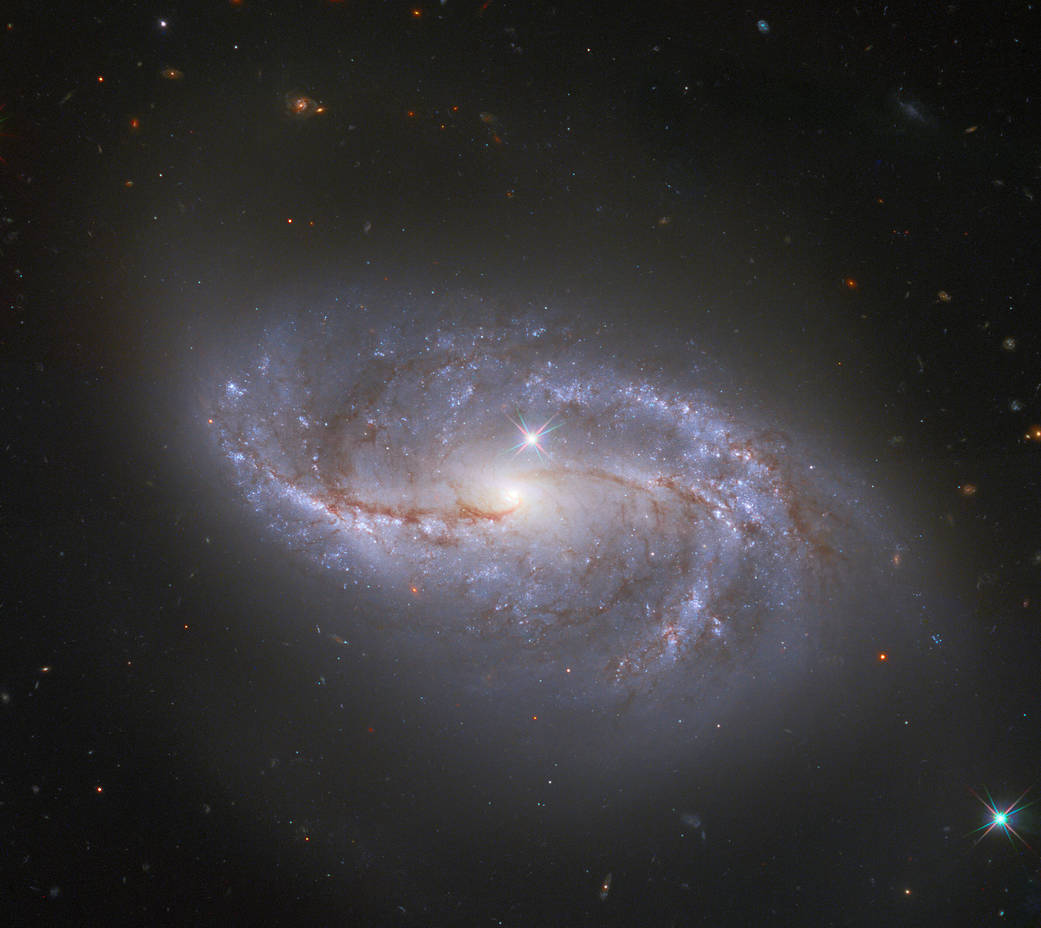Meet NGC 2608, a barred spiral galaxy about 93 million light years away, in the constellation Cancer. Also called Arp 12, it’s about 62,000 light years across, smaller than the Milky Way by a fair margin. The Hubble Space Telescope captured this image with its Wide-Field Camera 3 (WFC3).
Depending on your age, you may easily remember a time when images like this weren’t available. But the Hubble changed all that. The Hubble has reached deep into the Universe to capture images like this. And it’s now been doing it for 30 years—an entire human generation.
NGC 2608 may be the star of this image, <ahem> but there’s more going on. The two prominent points of light with spikes are foreground stars in our own Milky Way galaxy. They’re called diffraction spikes, and telescope optics make them appear like that.
What’s interesting is all the other sources of light. Each one is a distant galaxy, and there are an almost impossible-to-count number of them in this image. You can see their disks, some edge-on, some face-on, and all angles in between. You can see the red-shifted light from some of them, while others appear white, green, or blue.
It’s a remarkable tableau. How many total stars are there in this image? How many planets? (Civilizations?) We’ll never know the answers to all those questions.
But we have learned a few things about barred spiral galaxies like NGC 2608.

They’re the most common type of galaxy as far as we can tell, and between half and two-thirds of all galaxies are barred spirals. The bar itself is a density wave rather than a collection of stars. Studies have shown that the bar density wave can compress gas and trigger star formation. Other research shows that the bar is a conduit for gas, channeling it inwards.
Other research conflicts with that, saying that the bar can distribute gas in a way that actually inhibits star formation. Clearly, we have a lot to learn.
But whatever the particulars are when it comes to barred spirals, they’re sure pretty.

